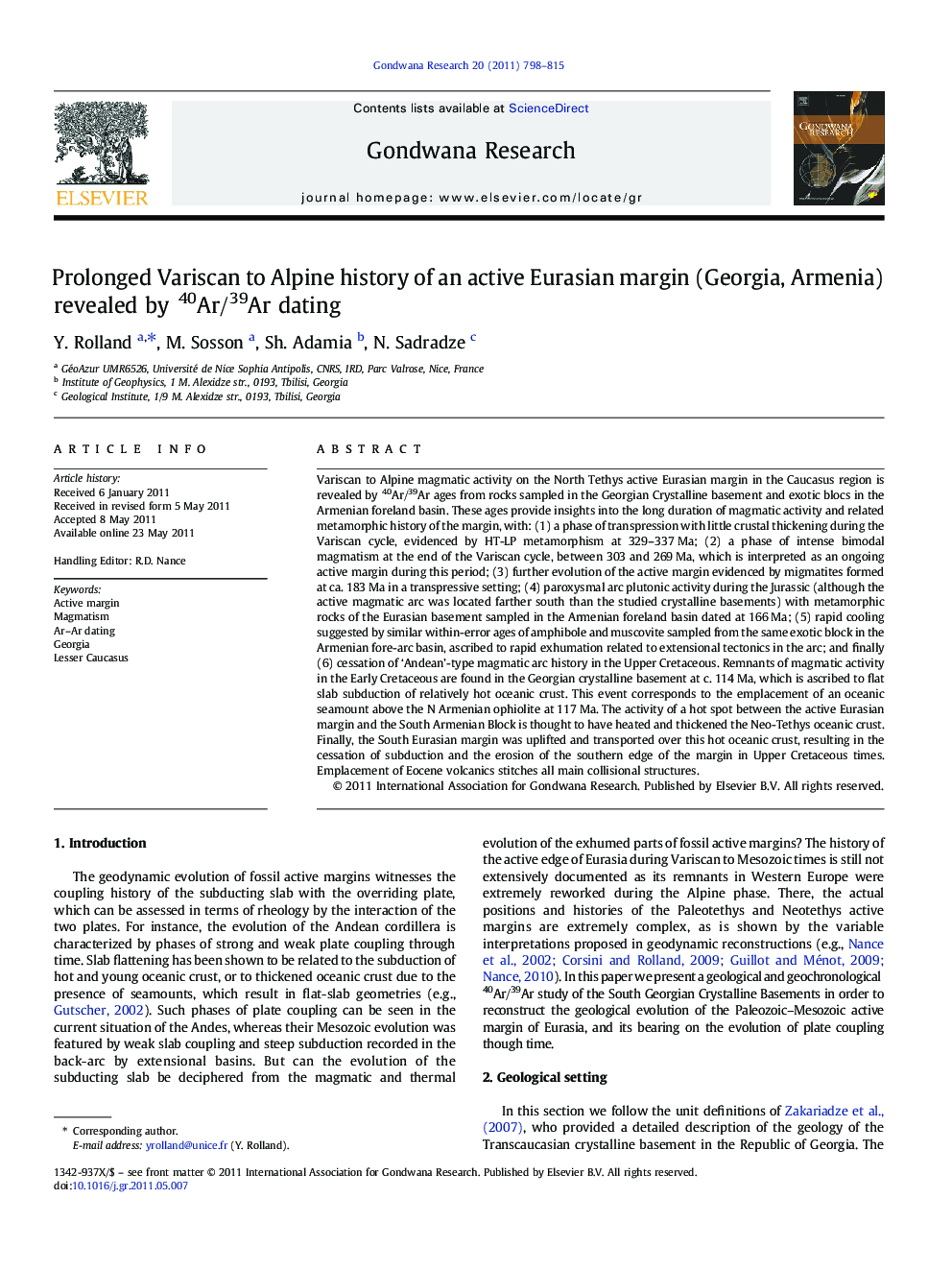| کد مقاله | کد نشریه | سال انتشار | مقاله انگلیسی | نسخه تمام متن |
|---|---|---|---|---|
| 4726862 | 1640146 | 2011 | 18 صفحه PDF | دانلود رایگان |

Variscan to Alpine magmatic activity on the North Tethys active Eurasian margin in the Caucasus region is revealed by 40Ar/39Ar ages from rocks sampled in the Georgian Crystalline basement and exotic blocs in the Armenian foreland basin. These ages provide insights into the long duration of magmatic activity and related metamorphic history of the margin, with: (1) a phase of transpression with little crustal thickening during the Variscan cycle, evidenced by HT-LP metamorphism at 329–337 Ma; (2) a phase of intense bimodal magmatism at the end of the Variscan cycle, between 303 and 269 Ma, which is interpreted as an ongoing active margin during this period; (3) further evolution of the active margin evidenced by migmatites formed at ca. 183 Ma in a transpressive setting; (4) paroxysmal arc plutonic activity during the Jurassic (although the active magmatic arc was located farther south than the studied crystalline basements) with metamorphic rocks of the Eurasian basement sampled in the Armenian foreland basin dated at 166 Ma; (5) rapid cooling suggested by similar within-error ages of amphibole and muscovite sampled from the same exotic block in the Armenian fore-arc basin, ascribed to rapid exhumation related to extensional tectonics in the arc; and finally (6) cessation of ‘Andean’-type magmatic arc history in the Upper Cretaceous. Remnants of magmatic activity in the Early Cretaceous are found in the Georgian crystalline basement at c. 114 Ma, which is ascribed to flat slab subduction of relatively hot oceanic crust. This event corresponds to the emplacement of an oceanic seamount above the N Armenian ophiolite at 117 Ma. The activity of a hot spot between the active Eurasian margin and the South Armenian Block is thought to have heated and thickened the Neo-Tethys oceanic crust. Finally, the South Eurasian margin was uplifted and transported over this hot oceanic crust, resulting in the cessation of subduction and the erosion of the southern edge of the margin in Upper Cretaceous times. Emplacement of Eocene volcanics stitches all main collisional structures.
Figure optionsDownload as PowerPoint slideResearch highlights
► Subduction front initiated during the Variscan orogeny continuous until the Triassic.
► Slab roll-back is suggested by S-migration of arc and back-arc opening.
► Magmatic arc stopped at 80 Ma, when the Armenian block was accreted to Eurasia.
Journal: Gondwana Research - Volume 20, Issue 4, November 2011, Pages 798–815